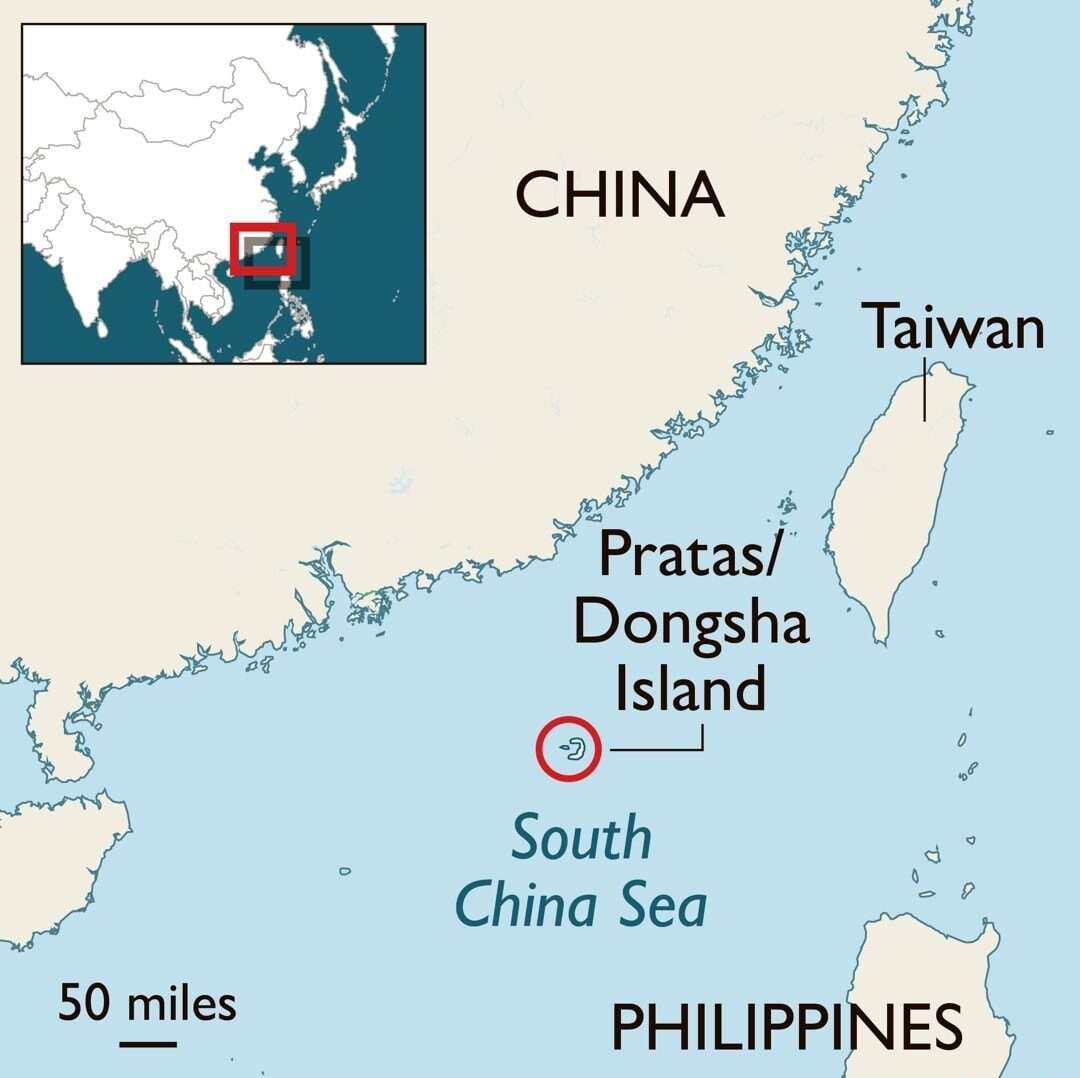At the Shangri-La Dialogue in Singapore on June 1, U.S. Defense Secretary Pete Hegseth delivered an unambiguous warning: the People’s Liberation Army is “rehearsing for the real deal” regarding Taiwan. Citing daily training operations and an increasingly aggressive military posture by China, Hegseth stated: “We are not going to sugarcoat it the threat China poses is real. And it could be imminent.”
This statement came as China escalated its military activity around Taiwan and the broader South China Sea region. In the last seven days, the PLA Navy has deployed a combination of amphibious assault and support vessels near outlying Taiwanese-held islands. On May 29,2025, satellite imagery confirmed the Type 071 Yimengshan operating approximately 80 kilometers south of Dongsha (Pratas) Islands, accompanied by two Jiangdao-class corvettes and a Type 903 replenishment ship. The deployment lacked any official exercise declaration but bore the hallmarks of a simulated occupation scenario.
 On June 2, the Taiwanese Ministry of Defense reported a “deliberate maritime encroachment pattern” near Taiping Island, another Taiwan-administered territory in the Spratly archipelago. Analysts say the maneuvers serve to normalize a PLA maritime presence in proximity to Taiwanese territory which is a potential precursor to future blockades or island seizures.
On June 2, the Taiwanese Ministry of Defense reported a “deliberate maritime encroachment pattern” near Taiping Island, another Taiwan-administered territory in the Spratly archipelago. Analysts say the maneuvers serve to normalize a PLA maritime presence in proximity to Taiwanese territory which is a potential precursor to future blockades or island seizures.
Parallel to the naval buildup, the PLA launched its “Strait Thunder-2025A” exercises between May 30 and June 3, which included live-fire missile simulations, carrier-based aircraft incursions, and mock electronic warfare attacks on Taiwan’s power and radar grid. The Shandong aircraft carrier conducted flight operations just 24 nautical miles, east of Hualien, the closest such maneuver to date.
In response, Taiwan has stepped up asymmetric defense preparations. On June 1, President Lai Ching-te’s administration announced production scaling of “Jinfeng” and “Red Sparrow III” loitering drones to counter maritime and airborne threats, targeting a production rate of 15,000 drones per month by late 2028.
Yet Taiwan’s efforts may be undermined by distractions unfolding elsewhere. Between June 1–3, Ukraine launched its most extensive drone strikes into Russia, hitting energy hubs in Bryansk and Voronezh and attempting to blind Russian radar systems. This surge in Eastern European hostilities has drawn renewed U.S. and NATO focus, raising fears that China could exploit the West’s diverted attention.
“China sees opportunity in global distraction,” said a regional military attaché. “It’s a stress test. These naval deployments and simulated island seizures are probing how quickly Washington and its allies can pivot between multiple strategic theaters.”
Symbolically, Taiwan’s civil society remains defiant. On June 4, President Lai led national commemorations marking the 36th anniversary of the Tiananmen Square massacre, a date Beijing aggressively censors. Candlelight vigils were held across Taipei, Tainan, and Taichung, in stark contrast to the enforced silence across mainland China. The message was unmistakable: Taiwan sees democracy not as a political preference, but a frontline identity.
Meanwhile, Chinese military operations extend well beyond Taiwan. By May 31, U.S. intelligence confirmed further militarization of China’s artificial islands in the Spratlys, now equipped with HQ-22B missile batteries and enhanced radar surveillance towers. Simultaneously, the Pentagon has accelerated deployment of the orbital “Golden Dome” missile defense shield to counter China’s hypersonic weapons and growing space-based threats.
Beijing’s ambitions also stretch westward. Hegseth warned on June 1 of Chinese attempts to expand influence around the Panama Canal, a strategic chokepoint. U.S. officials believe China is investing in logistics zones and water infrastructure there under the guise of civilian development, potentially threatening maritime supply chain security.
As of June 4, the situation in the Indo-Pacific remains volatile. The convergence of global crises from Ukraine’s expanding drone war to China’s gray-zone maritime maneuvers has stretched allied intelligence coordination. For Taiwan, the challenge is no longer a theoretical invasion, but an unfolding siege of presence, intimidation, and isolation.
Taiwan doesn’t need to be invaded, it can be strangled slowly, island by island, blockade by blockade, under the shadow of international distraction. As Ukraine’s drone campaign grips the world’s attention and global security bandwidth is stretched thin, China appears to be calculating that now is the time to tighten the noose. The steady deployment of PLA forces, naval exercises simulating seizure of outlying territories, and the ramping up of psychological and economic pressure form a siege without declarations.
The real danger is not in the storm of missiles, but in the silence that comes before when deterrence fades, and a democratic island is slowly isolated. The warning signs are all there. The question is whether the world will recognize them before it’s too late.

